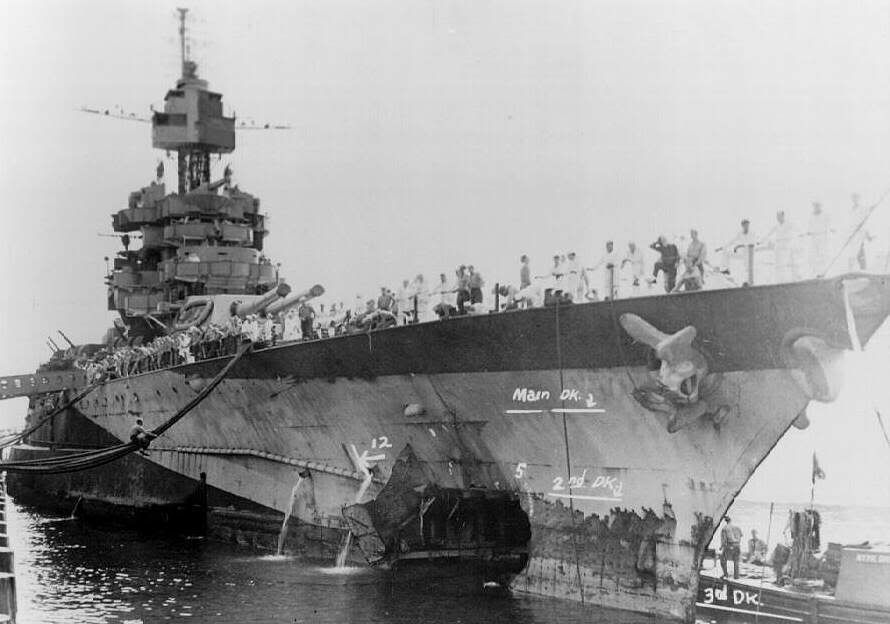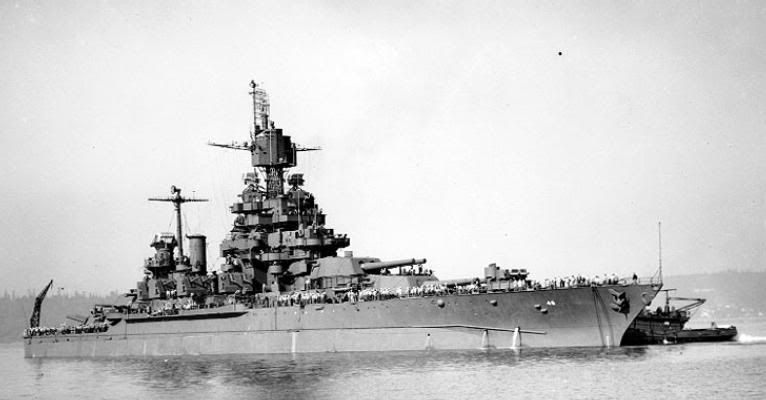
|
|
SUBSIM: The Web's #1 resource for all submarine & naval simulations since 1997
 |
SUBSIM: The Web's #1 resource for all submarine & naval simulations since 1997 |
 01-06-08, 09:49 AM
01-06-08, 09:49 AM
|
#16 | |
|
Chief of the Boat
|
Quote:
|
|

|

|
 01-06-08, 02:08 PM
01-06-08, 02:08 PM
|
#17 |
|
Weps
 Join Date: Sep 2002
Location: SW France
Posts: 361
Downloads: 137
Uploads: 0
|
The big ones were the generator cooling water outlets, I seem to remember. There were also the loo outlets (pain in the neck if you got under one of those
 !), and in the really by-gone days (one hopes) there were tank cleanings from tankers being pumped straight into the sea !), and in the really by-gone days (one hopes) there were tank cleanings from tankers being pumped straight into the sea  . . MLF
__________________
Je pense donc je fuis! |

|

|
 01-06-08, 02:09 PM
01-06-08, 02:09 PM
|
#18 | ||
|
Sea Lord
 Join Date: Mar 2007
Location: La Paz, Bolivia
Posts: 1,965
Downloads: 277
Uploads: 51
|
Quote:
 CapZap
__________________

|
||

|

|
 01-06-08, 02:45 PM
01-06-08, 02:45 PM
|
#19 |
|
Stowaway
Posts: n/a
Downloads:
Uploads:
|
some quick editing.

|

|
 01-06-08, 02:55 PM
01-06-08, 02:55 PM
|
#20 | |
|
Black Magic
 |
Quote:
|
|

|

|
 01-06-08, 04:10 PM
01-06-08, 04:10 PM
|
#21 | |
|
Chief of the Boat
|
Quote:
 
|
|

|

|
 01-06-08, 05:46 PM
01-06-08, 05:46 PM
|
#22 | |
|
Stowaway
Posts: n/a
Downloads:
Uploads:
|
Quote:
As I have no intention of doing anything but show it's possible, I'll not be refineing it. |
|

|
 01-06-08, 05:51 PM
01-06-08, 05:51 PM
|
#23 | ||
|
Black Magic
 |
Quote:
 Just a .dat file with the particlegenerator in it would be great Just a .dat file with the particlegenerator in it would be great 
|
||

|

|
 01-06-08, 11:52 PM
01-06-08, 11:52 PM
|
#24 |
|
Sea Lord
 Join Date: Sep 2006
Location: Adelaide, South Australia
Posts: 1,954
Downloads: 207
Uploads: 0
|
Would be nice as an indication of an enemy ships hull integrity. The more damage she recieves, the more water pours out from the bilge pumps as she slowly loses control.:hmm:
|

|

|
 01-07-08, 07:33 AM
01-07-08, 07:33 AM
|
#25 | |
|
Admiral
 Join Date: Mar 2007
Posts: 2,200
Downloads: 172
Uploads: 0
|
Quote:
a damaged hull must produce a strong bilge exhaust    
Last edited by tonschk; 01-08-08 at 09:51 PM. |
|

|

|
 01-07-08, 10:23 AM
01-07-08, 10:23 AM
|
#26 |
|
Lucky Jack
 |
This is a very cool idea. I see some progress already and it looks good! I hope it works out!
__________________
“You're painfully alive in a drugged and dying culture.” ― Richard Yates, Revolutionary Road |

|

|
 01-07-08, 01:52 PM
01-07-08, 01:52 PM
|
#27 | ||
|
Black Magic
 |
Quote:

|
||

|

|
 01-07-08, 04:58 PM
01-07-08, 04:58 PM
|
#28 |
|
Loader
 Join Date: Feb 2004
Location: ME
Posts: 84
Downloads: 74
Uploads: 0
|
Actually most of the water shown being pumped overboard is cooling water from machinery spaces. Seawater is pumped in through seachests (a through hull fitting running to a strainer to keep the sea critters out of the engines) and used in a heat exchanger to cool the anti-freeze type fluid that runs in a closed circuit through the ship's engines and generators. Once the seawater ran through the heat exchangers it was pumped overboard. As long as an egine was running the pumps were at work. We called it overboard discharge and was vital in keeping all the machinery running properly.
Bilge water is pumped only a couple of times a day, the pumps are shut down afterwards. A ship doesn't take on that much bilge water to warrant the pumps running constantly. Unless she's damaged of course. If a ship is damaged her bilge pumps might be as well. I think that battleship in the above photo is being pumped out with a portable pump. Her machinery spaces were probably inoperable due to the attack. Without the generators or main engines the ship's other machinery ceases to function. |

|

|
 01-07-08, 05:16 PM
01-07-08, 05:16 PM
|
#29 |
|
Commander
 Join Date: Feb 2007
Location: UK
Posts: 473
Downloads: 411
Uploads: 0
|
I don't think the water in the lowest of the three pictures (the one with the pink arrow) is bilge water. It looks like run-off from fire-fighting hoses. Bilge pumps tended to be small and of limited capacity, so it's unlikely that they would pump out greater and greater volumes of water as the ship was progressively damaged and took on more water. They were simple beasts, often operated by a float switch which switched on the pump automatically when water in the bilge reached a certain level.
There were often two, or more, bilge pumps, with the primary one fitted at the lowest point in the bilge and the other(s) slightly higher, to take over when the primary became clogged ( a very common occurrence), or overwhelmed. The type of hull also affected the amount of water in the bilges and, therefore, the need for pumping. Wooden hulls, with caulking, leaked like seives and needed constant pumping. Riveted hulls, since the rivets were actually fitted into holes in the hull, also leaked. The older the hull ( and, therefore the older the rivets - looser, corroded and stressed by years of vibration ) the more leakage and so the more need to pump out the bilges. Welded hulls were the least leaky, but still, any ship will take on water - if not from below the waterline, so much as from above decks, through hatches, ventilators etc. IMHO working bilge-pump outflow would be great eye-candy, but all that is needed is a simple flow, not tied in to ship damage. |

|

|
 01-07-08, 07:20 PM
01-07-08, 07:20 PM
|
#30 |
|
Eternal Patrol
 |
And don't forget that in WW2-era surface ships, every time someone flushes the head it dumps straight overboard.
 Seriously, this could be a cool little thing. 
__________________
“Never do anything you can't take back.” —Rocky Russo |

|

|
 |
|
|
